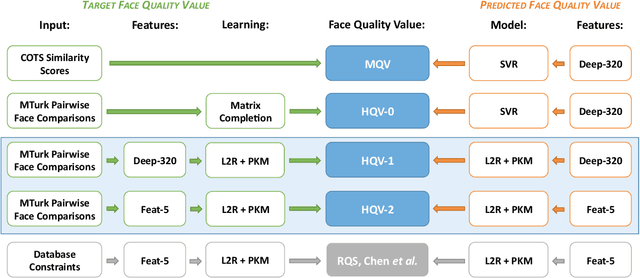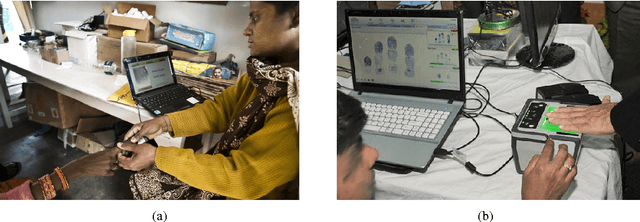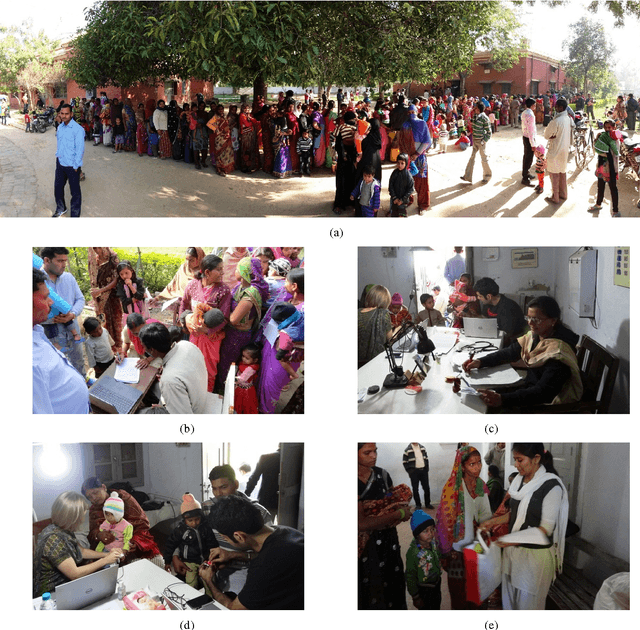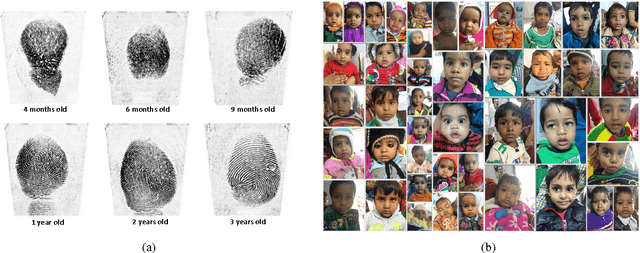Lacey Best-Rowden
Automatic Face Image Quality Prediction
Jun 29, 2017



Abstract:Face image quality can be defined as a measure of the utility of a face image to automatic face recognition. In this work, we propose (and compare) two methods for automatic face image quality based on target face quality values from (i) human assessments of face image quality (matcher-independent), and (ii) quality values computed from similarity scores (matcher-dependent). A support vector regression model trained on face features extracted using a deep convolutional neural network (ConvNet) is used to predict the quality of a face image. The proposed methods are evaluated on two unconstrained face image databases, LFW and IJB-A, which both contain facial variations with multiple quality factors. Evaluation of the proposed automatic face image quality measures shows we are able to reduce the FNMR at 1% FMR by at least 13% for two face matchers (a COTS matcher and a ConvNet matcher) by using the proposed face quality to select subsets of face images and video frames for matching templates (i.e., multiple faces per subject) in the IJB-A protocol. To our knowledge, this is the first work to utilize human assessments of face image quality in designing a predictor of unconstrained face quality that is shown to be effective in cross-database evaluation.
Biometrics for Child Vaccination and Welfare: Persistence of Fingerprint Recognition for Infants and Toddlers
Apr 17, 2015



Abstract:With a number of emerging applications requiring biometric recognition of children (e.g., tracking child vaccination schedules, identifying missing children and preventing newborn baby swaps in hospitals), investigating the temporal stability of biometric recognition accuracy for children is important. The persistence of recognition accuracy of three of the most commonly used biometric traits (fingerprints, face and iris) has been investigated for adults. However, persistence of biometric recognition accuracy has not been studied systematically for children in the age group of 0-4 years. Given that very young children are often uncooperative and do not comprehend or follow instructions, in our opinion, among all biometric modalities, fingerprints are the most viable for recognizing children. This is primarily because it is easier to capture fingerprints of young children compared to other biometric traits, e.g., iris, where a child needs to stare directly towards the camera to initiate iris capture. In this report, we detail our initiative to investigate the persistence of fingerprint recognition for children in the age group of 0-4 years. Based on preliminary results obtained for the data collected in the first phase of our study, use of fingerprints for recognition of 0-4 year-old children appears promising.
 Add to Chrome
Add to Chrome Add to Firefox
Add to Firefox Add to Edge
Add to Edge